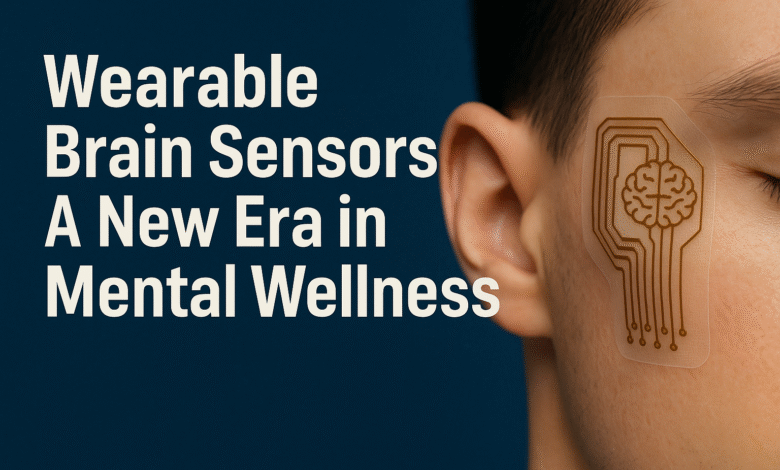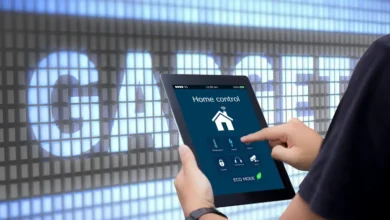
Wearable Brain Sensors: A New Era in Mental Wellness
What if understanding your brain’s needs became as easy as checking your heart rate? That’s no longer science fiction—it’s the reality that wearable brain sensors are unlocking. From the sleek innovation of brain-monitoring tattoos to the rise of e-tattoo stress trackers, this cutting-edge field of neurotech wearables is reshaping how we approach emotional well-being. These incredible tools fall under a broader umbrella of mental wellness wearable tech, and they’re driven by powerful brain-sensing technology that brings science to the surface—literally.
But let’s not get ahead of ourselves. Let’s first zoom in on what this tech actually is and why it’s more personal—and more important—than you think.
Wearable Brain Sensors: What Are Wearable Brain Sensors?
Think of them as tiny, flexible gadgets that quietly sit on your skin—often in the form of a soft patch or invisible tattoo. Their job? To read your wearable brain sensors electrical signals and send real-time data to a connected app. Whether you’re overwhelmed, anxious, or focused, wearable brain sensors can detect those mental states by monitoring brainwave patterns.
What sets them apart from traditional wearable brain sensors like fitness bands is their intimacy with your nervous system. While your smartwatch knows how many steps you took, this device knows how you felt taking them.
The Shift from Fitness to Feelings
I never knew I was actually stressed until my e-tattoo flagged it,” says Mariam, a 29-year-old UX designer who’s been using an e-tattoo stress tracker for six months. “I used to feel ‘off’ without knowing why. Now, I catch the signs early and take action.
These stories aren’t rare. More users are turning to mental wellness wearable tech not just to improve productivity, but to gain a deeper understanding of their emotional rhythms.
This is what makes these gadgets game-changers—they validate your feelings with science, helping you recognize and manage stress, fatigue, and even burnout. Some tech even offers gentle vibration cues when your focus drops, nudging you back on track.
The Power of Brain-Monitoring Tattoos
Among the most fascinating formats of these devices is the brain-monitoring tattoo. Imagine a nearly invisible sticker placed behind your ear or on your temple. It’s feather-light, breathable, and blends with your skin. No one even notices it’s there—but it’s quietly collecting brainwave data.
Why is this important? Because comfort and discretion are key for long-term use. No clunky headbands or wires here—just seamless integration into your daily routine. Researchers love it too: early studies show that brain-monitoring tattoos perform as reliably as EEG machines in controlled environments.
And as the demand for neurotech wearables increases, these tattoos could even become common in workplaces or schools for stress management and cognitive enhancement.
How Brain-Sensing Technology Actually Works
Let’s simplify it: brain-sensing technology relies on EEG (electroencephalography) wearable brain sensors that pick up tiny electrical impulses in your wearable brain sensors. These are the signals that map out your attention, emotional stress, cognitive load, and even sleep cycles.
The beauty is in real-time insights. These devices sync with your phone or smartwatch and provide you with digestible feedback like:
- 💭 “Your stress levels are elevated—try breathing exercises.”
- 🧠 “Your focus has been high for 32 minutes. Time for a mental break.”
- 🌙 “Sleep depth was low last night. Adjust your bedtime routine.”
It’s like having a brain coach in your pocket.
The Rise of Neurotech Wearables in Daily Life
The rise of neurotech wearables isn’t limited to tech geeks or health obsessives. From corporate professionals looking to enhance focus, to students battling anxiety, or even parents trying to balance it all—these wearables are finding a home in everyday lives.
A recent study by the Neurotech Journal showed that 68% of users reported reduced anxiety within three weeks of using a wearable brain sensors. That’s powerful. Especially in a world where therapy is expensive and burnout is normalized.
Brands like NeuroFlow, iMEC, and Cognix are leading the way, integrating brain-sensing technology into wearables that are accessible, sleek, and even fashionable. One popular e-tattoo stress tracker is already FDA-cleared and available over the counter.
Beyond Monitoring: Towards Emotional Mastery
Here’s where it gets really exciting. These gadgets aren’t just tracking you—they’re teaching you. Using data collected over time, they start building personal mental health profiles.
You’ll begin to notice patterns:
- You’re most focused between 10 a.m. – 12 p.m.
- Your stress spikes after Zoom meetings
- You sleep best when you meditate for 10 minutes before bed
Armed with this awareness, you can redesign your day for emotional resilience. No guesswork—just clear, personalized guidance. That’s the magic of combining mental wellness wearable tech with machine learning.
Wearable Brain Sensors: Are There Any Risks or Concerns?
Like any tech, wearable brain sensors aren’t without their questions. Data privacy is a big one. After all, this is your brain we’re talking about. That’s why reputable companies are moving towards encrypted local data storage and user-first consent policies.
There’s also the learning curve—while these devices are easy to wear, understanding the feedback may take some time. Luckily, many apps now include in-app guides, AI-driven suggestions, and even journaling tools.
And while brain-monitoring tattoos and e-tattoo stress trackers are exciting, they’re not replacements for therapy or medical care. Think of them as allies—tools that help you listen to what your Mindfulness wearables has been trying to say all along.
The Future of Wearable Brain Sensors
As this field evolves, we’ll likely see more personalized and AI-enhanced neurotech wearables. Some prototypes are being designed to detect early signs of depression or ADHD, while others aim to improve memory and learning speeds.
It’s no exaggeration to say we’re entering a new era in mental wellness—one where emotions are no longer invisible, but understood and optimized.
Final Thoughts: Why This Tech Matters
Mental health isn’t a luxury—it’s a necessity. And finally, technology is catching up with that truth. Devices like wearable brain sensors, e-tattoo stress trackers, and brain-monitoring tattoos are not here to “fix” us, but to help us understand ourselves.
As Dr. Talia Hines, a cognitive neuroscientist, puts it:
Mental wellness tech gives us the missing mirror. For the first time, we can observe our minds in motion—and that insight is empowering.
So whether you’re just curious or ready to try it for yourself, this isn’t just a tech trend—it’s a turning point.




